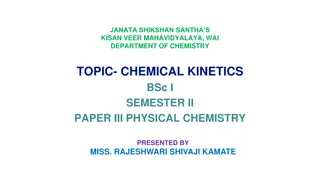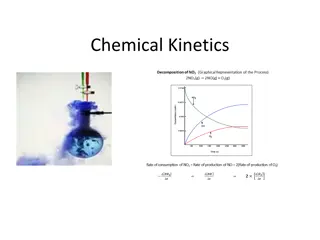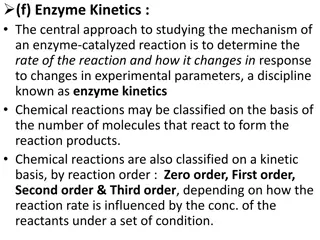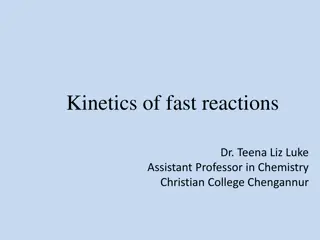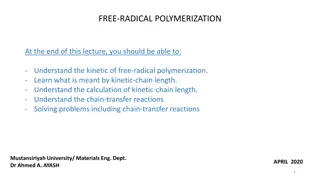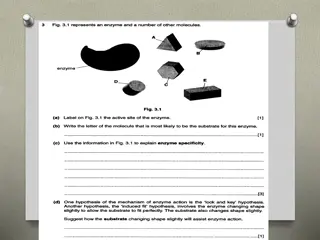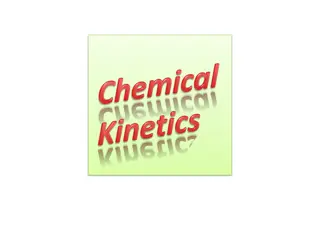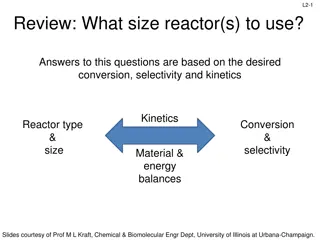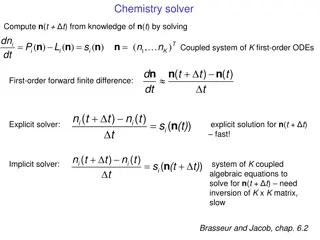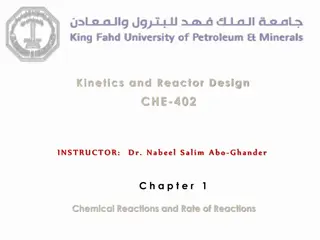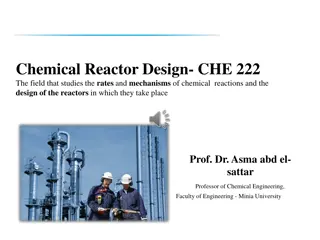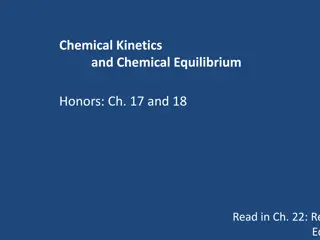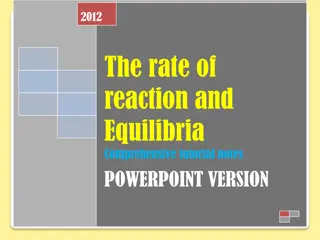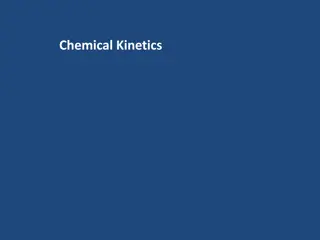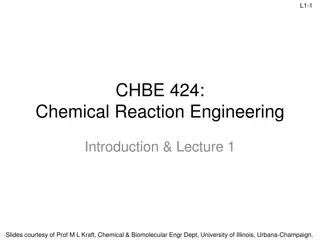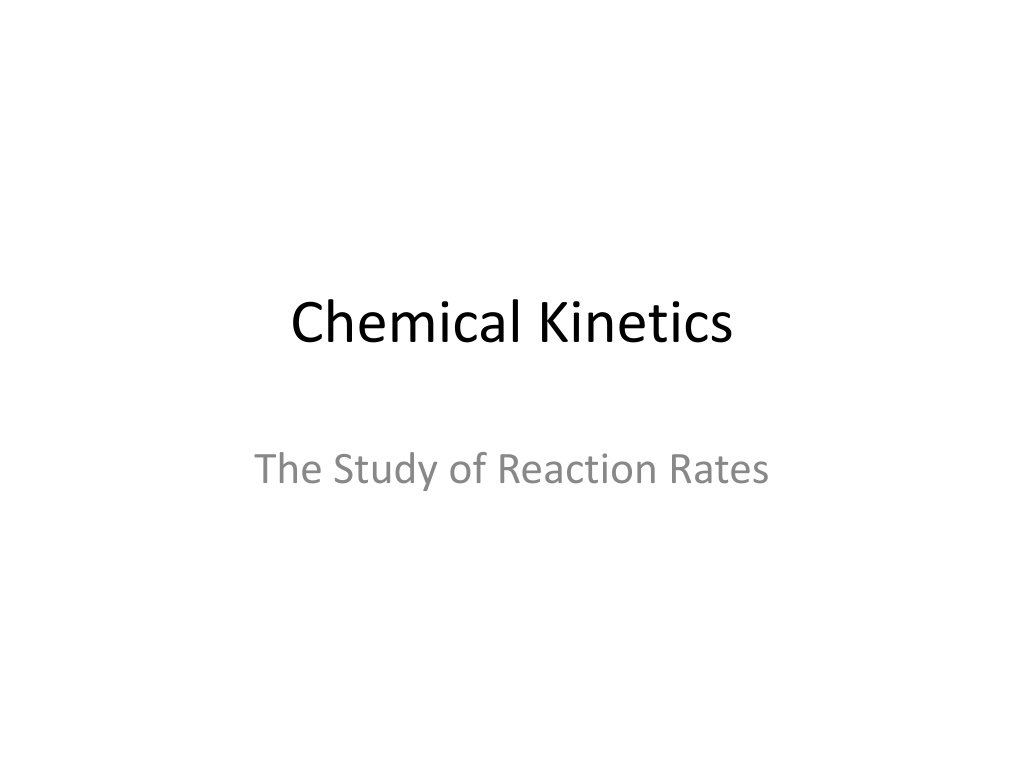
Understanding Chemical Kinetics and Reaction Rates
Explore the fascinating world of chemical kinetics and reaction rates, from defining rates and measuring progress to standardizing reactions. Learn how concentrations change in chemical reactions and how reaction rates are calculated from concentration measurements over time.
Download Presentation

Please find below an Image/Link to download the presentation.
The content on the website is provided AS IS for your information and personal use only. It may not be sold, licensed, or shared on other websites without obtaining consent from the author. If you encounter any issues during the download, it is possible that the publisher has removed the file from their server.
You are allowed to download the files provided on this website for personal or commercial use, subject to the condition that they are used lawfully. All files are the property of their respective owners.
The content on the website is provided AS IS for your information and personal use only. It may not be sold, licensed, or shared on other websites without obtaining consent from the author.
E N D
Presentation Transcript
Chemical Kinetics The Study of Reaction Rates
What is a Rate? The rate of a process in the amount of progress that has been made, divided by the time required to achieve that progress. Speed = ???????? ???? Example: You travel 102 miles in 2.00 hours Average Speed = 102 ?? 2.00 ?= 51.0?? ?
The Rate of a Chemical Reaction In a chemical reaction, we can define progress as the consumption of a reactant or the formation of a product. To measure this progress, we measure how much a reactant concentration decreases in a given period of time, or how much a product concentration increases in a given period of time.
The Rate of a Chemical Reaction But not everything in a chemical reaction is changing at the same rate. 2A(g) + 3B(g) C(g) + 4D(g) Suppose the concentration of substance A is decreasing at the rate of 0.40 mol/ L s. What is happening to the other concentrations?
The Rate of a Chemical Reaction 2A(g) + 3B(g) C(g) + 4D(g) [?] ?= -0.40 ??? [?] ?= -0.60 ??? [?] ?= 0.20 ??? [?] ?= 0.80 ??? ? ? ? ? ? ? ? ?
Standardizing the Rate of a Chemical Reaction 2A(g) + 3B(g) C(g) + 4D(g) Rate = - [?] 2 ?= - [?] 3 ?= [?] = [?] 4 ? ? All of the above expressions give the same result. -1 2( 0.40??? -1 ? ?) = 0.20 ??? ? ?) = 0.20 ??? ? ? 3(-0.60 ??? ? ?
Standardizing the Rate of a Chemical Reaction 2A(g) + 3B(g) C(g) + 4D(g) Rate = - [?] 2 ?= - [?] 3 ?= [?] = [?] 4 ? ? Rate = 0.20 ??? ? ? Rate = 1 4(0.80 ??? ? ?) = 0.20 ??? ? ?
Reaction Rate from Concentration Measurements TIME (Seconds) [H2O2] 0.882 0 60 0.697 120 0.566 180 0.458 240 0.372 300 0.298 360 0.236 420 0.188 480 0.152 540 0.120 600 0.094


